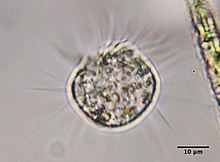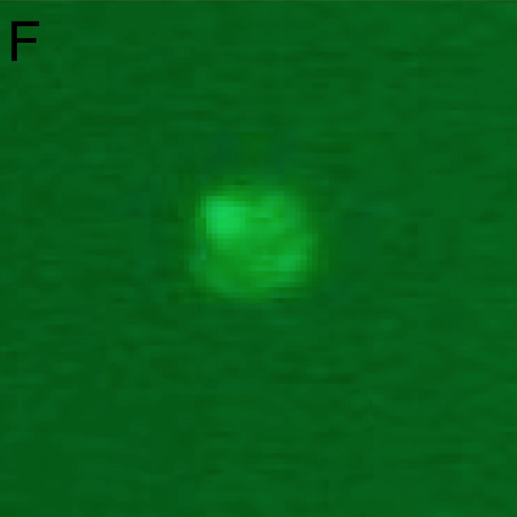Microbe Monday is a monthly installment featuring a microbe of clinical or scientific importance. This month, we discuss Halteria sp. which, while not pathogenic to humans, sheds new light on the competition dynamics between microbes. See here for our previous Microbe Monday posts.

In infectious diseases, we tend to focus on the one-directional interaction from microbe to host. This is certainly an important point of view and frames how clinicians treat infections. But it is just a chapter in the lifecycle of most microbes. Many pathogens normally exist outside of humans, whether that be in soil, lakes/rivers, other animal hosts, or elsewhere in the environment. It turns out that, in this environment, microbes can compete fiercely with each other for food and resources. Certain larger microbes even have the ability to eat bacteria. Viruses, on the other hand, have been thought to be too small and contain too little nutrients to fit into the microbe food-chain. Or so we thought…

A new paper authored by Dr. John DeLong and colleagues at the University of Nebraska-Lincoln has identified the first microbe which acts as a ‘virivore’ or virus-eating organism. Meet Halteria sp. (pictured right), a ciliate which lives in freshwater aquatic environments. This is by no means a new microbe to science; it may have been first identified as far back as 1675 and certain species are found around the world. It is not a picky eater, having been known to consume algae and bacteria for nutrients for some time. But evidence of Halteria consuming viruses is brand new, and was recently published in PNAS earlier this year.

In his paper, Dr. DeLong showed that when you put chloroviruses and Halteria in the same flask with no other food sources, viral titers are decreased ~10x while Halteria begin to divide. Furthermore, viral particles were detected inside the ciliate cell. Together, this indicates that the ciliate was consuming virus and using that energy to grow and reproduce. While this is the first evidence of an organism consuming virus, it is not likely the only example in nature. As more scientists start looking for this behavior, we will probably start to see many other microbes exhibiting this trick.
Halteria is not known to cause disease in humans, and it is not a pathogen we encounter in clinical infectious disease. However, this discovery does begin to rewrite the dogma surrounding how we view the microscopic world, and begs the question: what other tricks may microbes be hiding?